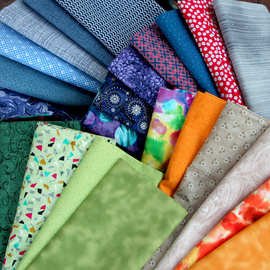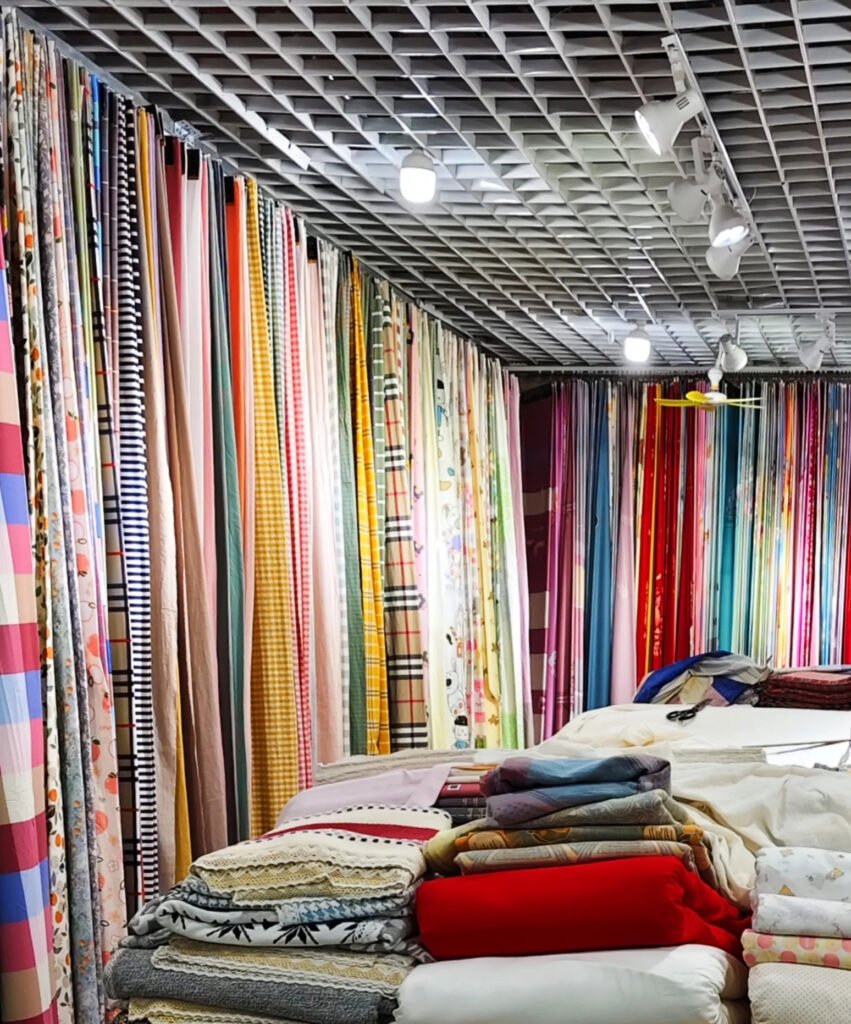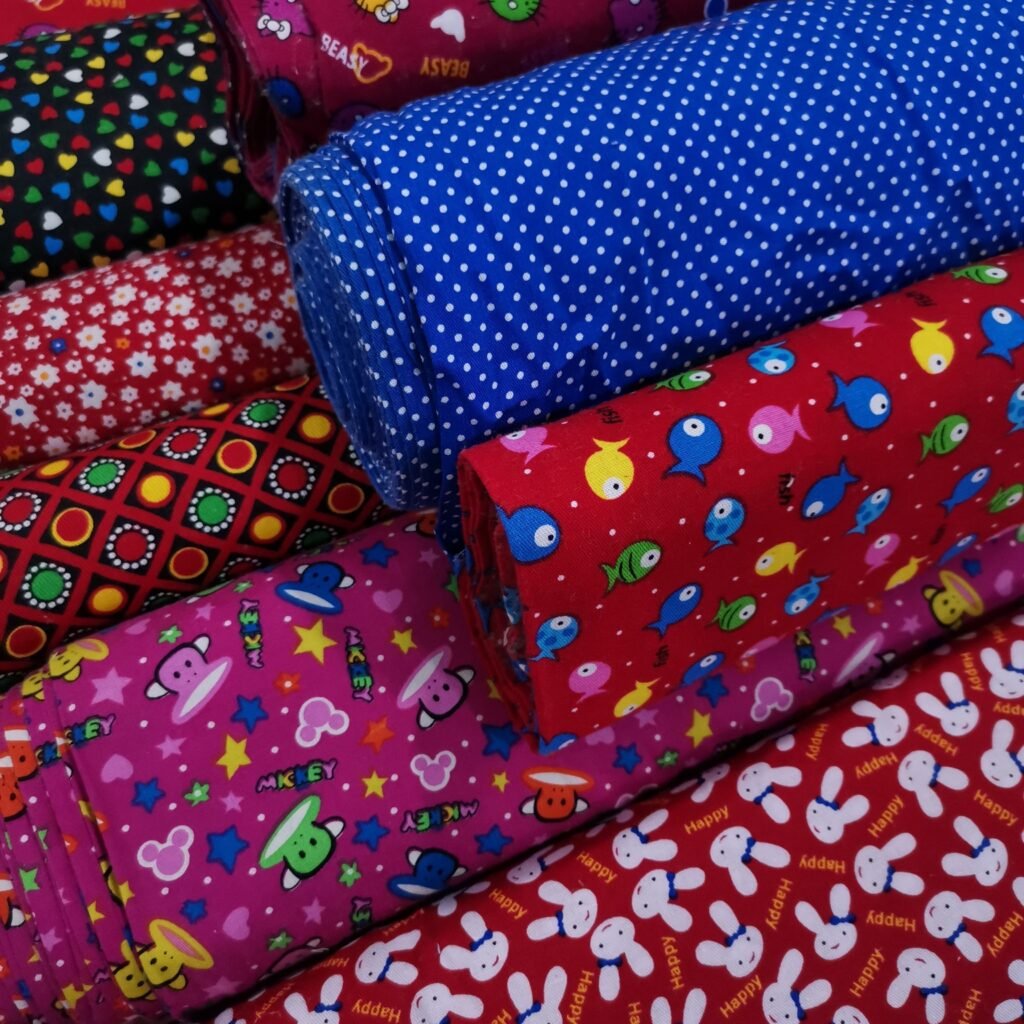Cotton isn’t just the fabric of our favorite T-shirt or the sheets we slide into at night—it’s the backbone of sustainable style. Imagine slipping into a breathable, soft garment that feels as good on your skin as it does for the planet. In a world flooded with fast fashion and synthetic blends, choosing cotton is a statement: you care about comfort, quality, and the environment.
At its core, cotton cloth material is a natural, renewable fiber derived from the cotton plant’s fluffy bolls. Its breathability, moisture-wicking, and biodegradability make it a superstar in eco-fashion circles. From basic plain weaves to luxurious organic jersey knits, cotton adapts to endless styles while minimizing ecological footprints. Its versatility helps designers create classic tees, flowy dresses, and even structured suiting—all with the planet in mind.
But what exactly makes cotton so special? Why do eco-conscious brands and conscious consumers keep circling back to this age-old textile? Let’s dig in. We’ll walk you through cotton’s lifecycle, compare it to synthetic rivals, unpack certification labels like GOTS and OEKO-TEX, and show you how forward-thinking mills like SzoneierFabrics ensure ethical, traceable, and eco-friendly production. Stick around for real data tables, pro tips on garment care, and a behind-the-scenes peek at how sustainable cotton is grown and crafted. By the end, you’ll be ready to choose—and care for—your cotton pieces with confidence.
What Is Cotton Cloth Material and Why Is It So Popular in Sustainable Fashion?
Cotton cloth material is a natural textile made from the soft fibers surrounding cotton seeds. Loved for its breathability, softness, and moisture-management, cotton has been a wardrobe staple for centuries. In the context of sustainable fashion, cotton stands out because it’s grown from a renewable resource, biodegrades at the end of its life cycle, and can be produced with organic methods that avoid harmful pesticides and conserve water.
Cotton’s Core Qualities
- Fiber Structure & Comfort: Why short staple vs. long staple matters
- Moisture Management: How cotton’s capillary action keeps you cool
- Biodegradability: Comparing decomp rates of cotton vs. polyester
- End-of-Life Scenarios: Recycling, composting, and downcycling cotton
| Property | Cotton (GSM 150) | Polyester (GSM 150) | Nylon (GSM 150) |
|---|---|---|---|
| Water Absorption (%) | 25 | 1 | 4 |
| Biodegradation (months) | 3–6 | >200 | >200 |
| Softness (subjective) | High | Medium | Medium |
| Breathability (CFM) | 100–150 | 30–50 | 40–60 |
- Fiber Structure & Comfort Cotton fibers are naturally twisted, allowing garments to drape softly and conform to your body. Long-staple cotton (e.g., Egyptian, Pima) provides extra smoothness and strength, minimizing pilling and extending garment life.
- Moisture Management With up to 25% moisture absorption by weight, cotton wicks sweat away from skin, making it perfect for hot climates and activewear. Its open weave also allows hot air to escape, reducing heat buildup.
- Biodegradability Unlike synthetics that linger in landfills for centuries, cotton breaks down within months under the right composting conditions—returning nutrients to soil.
- End-of-Life Scenarios Beyond composting, cotton can be mechanically recycled into industrial rags or insulation. Innovations in textile-to-textile recycling are also emerging, closing the loop on cotton garments.
Which Cotton Fabric Types Offer the Best Eco-Friendly Performance?

Not all cotton fabrics are created equal. From sturdy canvas to lightweight voile, each weave and knit impacts resource use, durability, and end-use. Popular eco-friendly options include organic plain weave shirting, certified fair-trade denim, and recycled cotton blends. These choices often require less water and toxic inputs, yet still deliver on performance and style.
Cotton Fabric Varieties
- Plain Weave vs. Twill vs. Satin: Trade-offs in strength and drape
- Knits (Jersey, Interlock): Stretch, breathability, and production efficiency
- Recycled Cotton Blends: Balancing resource savings vs. fiber quality
- Fabric Weight Impact: How GSM influences environmental footprint
| Fabric Type | Typical GSM | Water Use (L/kg) | Energy Use (MJ/kg) | Recyclability |
|---|---|---|---|---|
| Organic Cotton Shirting (Plain) | 120–150 | 5,500 | 20 | High |
| Fair-Trade Denim (Twill) | 300–350 | 7,500 | 25 | Medium |
| Cotton Jersey (Knit) | 150–180 | 6,000 | 18 | High |
| Recycled Cotton Blend | 180–200 | 4,000 | 15 | Medium |
- Plain Weave vs. Twill vs. Satin
- Plain weave offers simplicity and lower production energy.
- Twill (denim) adds strength but may require more water during finishing.
- Satin gives sheen but often uses more energy for special finishes.
- Knits (Jersey, Interlock) Knitted fabrics stretch without elastane, reducing reliance on non-renewable fibers. Production is often waste-minimal due to seamless knitting techniques.
- Recycled Cotton Blends Blending recycled cotton with a small percentage of virgin cotton retains strength while cutting resource needs by up to 30%.
- Fabric Weight Impact Heavier fabrics use more raw cotton per square meter, increasing water and energy footprints. Lightweight cotton for summer wear can halve resource use compared to heavy canvas.
How Is Cotton Grown and Processed to Minimize Environmental Impact?
Conventional cotton farming can be resource-intensive, but sustainable practices—like drip irrigation, integrated pest management, and cover cropping—dramatically cut water and chemical usage. Ginning, spinning, and weaving powered by renewable energy further shrink cotton’s ecological footprint.
Eco-Friendly Cotton Cultivation
- Water-Saving Techniques: Drip vs. flood irrigation, rainwater harvesting
- Pest Management: Biological controls vs. chemical pesticides
- Soil Health Strategies: Crop rotation, cover crops, no-till farming
- Energy Use in Mills: Solar, wind, and biomass for ginning and spinning
| Stage | Conventional Impact | Sustainable Practice | Reduction Achieved |
|---|---|---|---|
| Farming Water Use | 10,000 L/kg | Drip irrigation, rainwater capture | 40% |
| Pesticide Use | 25 kg/ha | Integrated pest management (IPM) | 70% |
| Soil Degradation | High tillage erosion | No-till, cover cropping | 50% erosion reduction |
| Energy (ginning) | Coal-powered boiler | Solar-thermal, biomass boilers | 60% CO₂ cut |
- Water-Saving Techniques Drip irrigation targets roots directly, slashing water waste by nearly half compared to traditional flood methods. Coupled with rainwater harvesting ponds, farms can operate off-grid during dry spells.
- Pest Management Rather than blanket spraying, IPM uses predatory insects, pheromone traps, and targeted biopesticides—cutting chemical load by over 70%.
- Soil Health Strategies Cover crops like legumes fix nitrogen, enriching soil naturally. No-till reduces erosion, maintains carbon stores, and boosts biodiversity.
- Energy Use in Mills Upgrading to solar-heated drying and biomass boilers for lint processing can lower CO₂ emissions by more than half.
What Are the Key Sustainability Advantages of Cotton vs. Synthetic Fibers?

Compared to oil-derived polyester or nylon, cotton offers a renewable origin, lower microplastic release, and simpler end-of-life options. While synthetics can outlast cotton in durability, the environmental trade-offs—microplastic pollution, non-renewable inputs, and poor biodegradability—tip the scale in cotton’s favor for many uses.
Cotton vs. Synthetics Comparison
- Resource Origin: Renewable plant vs. fossil fuels
- Microplastic Pollution: Shedding rates in wash cycles
- Carbon Footprints: Lifecycle GHG emissions comparison
- Durability vs. Lifecycle: When synthetics last longer, is it worth the cost?
| Metric | Cotton (per kg) | Polyester (per kg) | Nylon (per kg) |
|---|---|---|---|
| GHG Emissions (kg CO₂e) | 5 | 9 | 11 |
| Microplastic Shedding (%) | 0 | 1–5 | 2–6 |
| End-of-Life | Compostable | Landfill/incinerate | Landfill/incinerate |
| Raw Material Source | Renewable | Non-renewable | Non-renewable |
- Resource Origin Cotton grows annually, pulling CO₂ from the atmosphere. Polyester production relies on oil extraction and refining, locking in fossil carbon.
- Microplastic Pollution Every wash of polyester fabrics releases tiny fibers that accumulate in waterways and marine life. Cotton sheds only organic particles that biodegrade harmlessly.
- Carbon Footprints Per kilogram, cotton’s cradle-to-gate emissions average around 5 kg CO₂e, compared to nearly double for polyester.
- Durability vs. Lifecycle Nylon outerwear may outlast cotton canvas, but if discarded after a few seasons, the long-term environmental cost outweighs the short-term gain.
How Does Organic Cotton Differ from Conventional Cotton Farming?

Organic cotton farming bans synthetic pesticides and fertilizers, instead relying on natural soil amendments and pest controls. This practice improves biodiversity, soil health, and worker safety—though yields can be slightly lower, offset by premium pricing and reduced environmental harm.
Organic vs. Conventional Cotton
- Yield Comparisons: Balancing productivity vs. purity
- Soil & Biodiversity Gains: Pollinator health, earthworm counts
- Worker Welfare: Exposure reduction, fair labor standards
- Price & Market Dynamics: Consumer willingness to pay for organic
| Factor | Conventional Cotton | Organic Cotton | Impact Difference |
|---|---|---|---|
| Average Yield (kg/ha) | 1,500 | 1,200 | –20% |
| Pesticide Use (kg/ha) | 25 | 0 | –100% |
| Soil Organic Matter (%) | 2 | 4 | +100% |
| Consumer Price Premium | Baseline | +20–30% | Higher revenue for farmers |
- Yield Comparisons Organic farms may produce 15–25% less cotton per hectare, but diversified crop rotations and premium pricing often make up the difference.
- Soil & Biodiversity Gains Studies show organic fields host twice the earthworm population and 30% more pollinator species, boosting ecosystem resilience.
- Worker Welfare Eliminating toxic agrochemicals reduces illness among farm workers by up to 60%, supporting safer rural livelihoods.
- Price & Market Dynamics With conscious consumers willing to pay a 20–30% premium, organic cotton often leads to better farm profitability despite lower yields.
Do Cotton Certifications (GOTS, OEKO-TEX, Fair Trade) Guarantee True Sustainability?
Certification labels aim to standardize claims, but each has nuances. GOTS covers organic content and social criteria, while OEKO-TEX tests for harmful substances. Fair Trade focuses on equitable wages. Understanding what each certifies—and where gaps remain—helps brands and consumers make informed choices.
Major Cotton Certifications
- GOTS (Global Organic Textile Standard): Soil-to-shirt traceability
- OEKO-TEX Standard 100: Chemical safety benchmarks
- Fair Trade Cotton: Social compliance vs. environmental scope
- BLUESIGN & Beyond: Textile-industry environmental management
| Certification | Scope | Key Benefits | Common Limitations |
|---|---|---|---|
| GOTS | Organic content + social | Full supply-chain traceability | Higher audit costs |
| OEKO-TEX Standard 100 | Chemical residues | Ensures non-toxic end product | Doesn’t cover farming practices |
| Fair Trade | Labor conditions + wages | Improves farmer livelihoods | Limited environmental focus |
| BLUESIGN | Chemical management in mills | Reduces factory emissions & waste | No farmland criteria |
- GOTS Requires at least 70% organic fibers and independent audits of social and environmental compliance.
- OEKO-TEX Certifies finished textiles are free from specific harmful chemicals, supporting safe next-to-skin products.
- Fair Trade Guarantees a minimum price and social premium but may not address pesticide or water issues.
- BLUESIGN Focuses on mill-level chemical management, reducing water and air pollution in textile processing.
How Can Manufacturers Like SzoneierFabrics Ensure Ethical and Transparent Cotton Sourcing?

Leading mills invest in supply-chain traceability platforms, partner directly with farmer cooperatives, and adopt blockchain or QR-code tagging. SzoneierFabrics, for example, works with certified organic growers, publishes annual sustainability reports, and offers customer-auditable batch certificates from seed to shipment.
Ethical Sourcing Strategies
- Traceability Tech: Blockchain, RFID, QR code
- Direct Trade Models: Eliminating middlemen for fairer pricing
- Community Partnerships: Co-ops, training, and profit-sharing
- Transparency Reporting: KPIs, third-party audits, public dashboards
| Strategy | Implementation at SzoneierFabrics | Impact |
|---|---|---|
| Blockchain Traceability | QR codes on roll tags linked to grower data | 100% farm-to-factory visibility |
| Direct Trade | Annual contracts with organic cotton co-ops | 20% higher farmer income |
| Community Training | Pest-management and water-use workshops | 30% reduction in input costs |
| Sustainability Reports | Public dashboard with KPI metrics | Builds brand trust with B2B clients |
- Traceability Tech Every bale of cotton gets a unique QR code that unlocks planting dates, irrigation methods, and processing details.
- Direct Trade Models By contracting directly with farmer co-ops, SzoneierFabrics ensures farmers receive fair market rates—boosting local economies.
- Community Partnerships Workshops on drip irrigation and natural pesticides reduce costs and environmental harm, strengthening long-term supply security.
- Transparency Reporting Quarterly reports detail water usage, energy sources, and social impact metrics—empowering brands to make data-driven sustainability claims.
How Should Consumers Care for Cotton Garments to Extend Their Lifespan?

Proper care can double or triple a cotton garment’s usable life. Simple steps—like washing in cold water, air-drying, and avoiding harsh bleaches—keep fibers strong and colors vibrant. Investing a few extra minutes in care routines not only saves you money but also reduces the environmental toll of frequent replacements.
Cotton Garment Care
- Washing Best Practices: Temperature, detergents, load sizes
- Drying & Storage: Air-dry vs. machine tumble, folding vs. hanging
- Mending & Upcycling: Simple stitch repairs, creative restyling
- End-of-Life Options: Donation, textile recycling, composting
| Care Step | Recommended Practice | Environmental Benefit |
|---|---|---|
| Washing Temperature | Cold (≤30 °C) | 70% energy savings vs. hot water |
| Detergent Choice | Bio-based, phosphate-free | Less water pollution |
| Drying Method | Air-dry in shade vs. tumble dry on low | 90% lower energy use |
| Repair Frequency | Fix small holes/stitches promptly | Extends garment life by 6+ months |
- Washing Best Practices Cold-water cycles save energy and prevent shrinkage. Use eco-friendly detergents to cut chemical runoff.
- Drying & Storage Air-drying preserves fiber integrity. For knits, lay flat to prevent stretching; hang woven shirts on wooden hangers.
- Mending & Upcycling A simple hand-stitched patch or decorative embroidery can freshen up worn areas. Upcycling into tote bags or quilts gives garments a second life.
- End-of-Life Options When a piece truly wears out, consider textile recycling programs or industrial rags. Compost natural cotton scraps in home gardens.
Ready to Bring Sustainable Cotton to Your Brand?
Cotton cloth material offers unmatched comfort, performance, and eco-credentials. From organic fiber cultivation to certified processing and transparent sourcing, cotton stands as a cornerstone of responsible fashion. At SzoneierFabrics, we combine decades of expertise with cutting-edge traceability tech to deliver fully customizable cotton textiles—tailored to your design vision, quality standards, and sustainability goals.
Get in touch with SzoneierFabrics today to request free samples, explore fabric swatches, and discuss low-MOQ custom runs. Let’s work together to make sustainable fashion the new normal—one cotton yard at a time.

